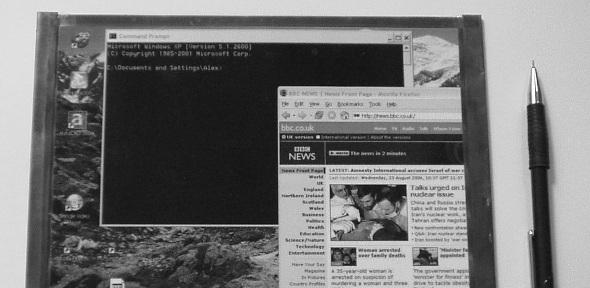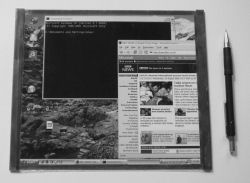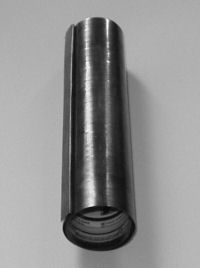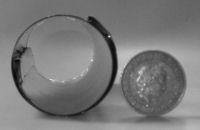
Dr Keith Seffen, a lecturer in the Structures Group, has developed a range of unique solid structures that can change shape.
Known as "morphing" structures they can be used to produce many different configurations but without the need of complex parts or sophisticated manufacture. Along with his co-workers, Dr Simon Guest and graduate student, Alex Norman, they are working on a range of applications, including re-usable packing, roll-up keyboards, and thin flexible displays for truly portable computing: a "mock-up" and its operation are shown in the photos, where an A5-sized flat screen snaps into a tube for compact carriage in a briefcase or pocket.
Keith considers the performance of structures from multiple viewpoints, in particular how to retain strength and stiffness while permitting large changes in shape. Typically, civil engineering structures are designed to be strong (safe) and stiff (immovable); when they are not, the consequences can be disastrous. Writing in 'Proceedings of the Royal Society of London, Series A' (DOI: 10.1098/rspa.2006.1750), he describes a class of structures that behave normally under the usual operating conditions, but when the demands upon them increase, their response softens in a prescribed manner, permitting large yet safe departures from the original shape before becoming stiff and self-locking in a new configuration. Such behaviour is governed by the choice of material and initial shape of structure, and Keith combines these influences in a systematic manner for the first time, yielding the conditions required for morphing behaviour in a wide range of structures.
Assisted by Cambridge Enterprise, Keith and his team have filed a patent on the manufacture and operation of their morphing devices, and are actively seeking industrial collaboration for future development.




